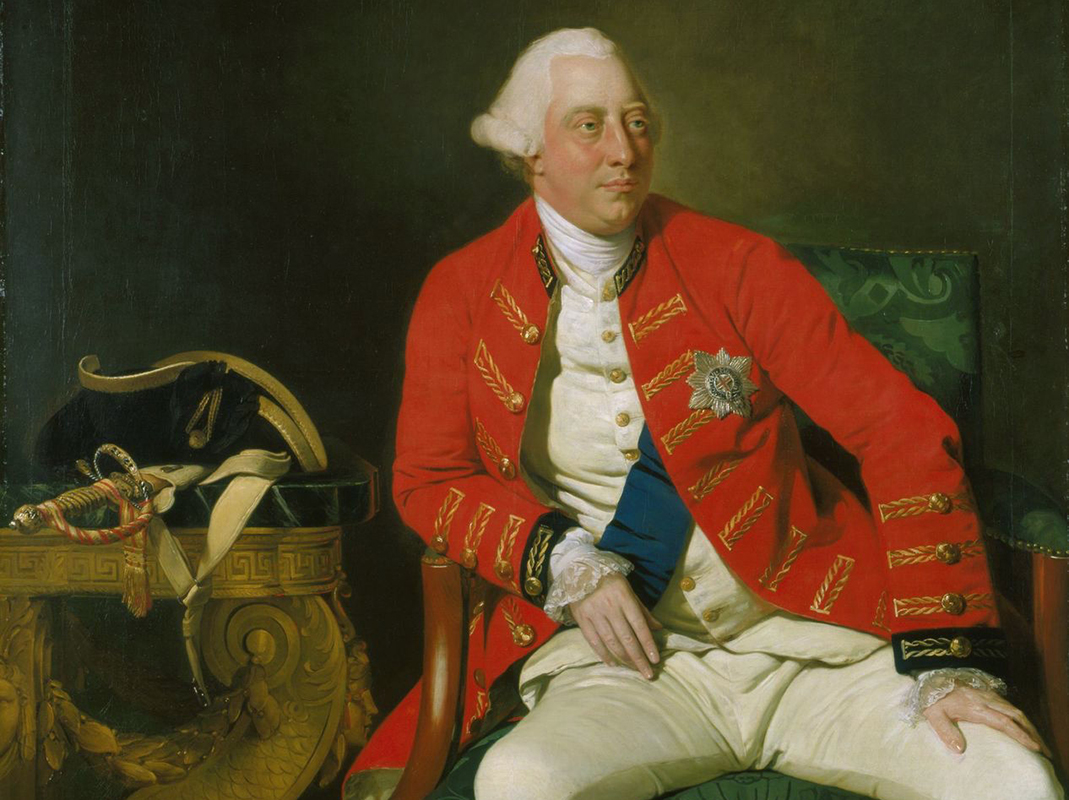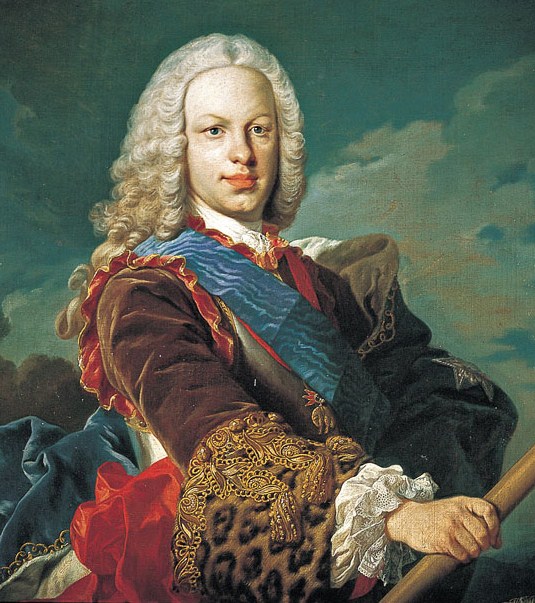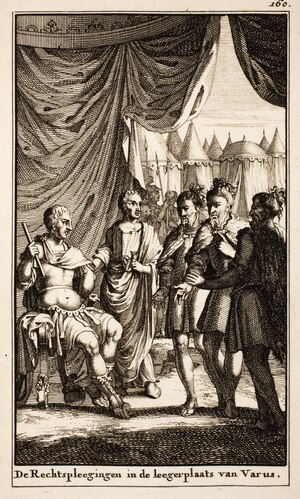Monarchs, like everyone else, are at risk of either being born with or developing mental illnesses. However, these men and women were in charge of countries - for the most part, absolutely so. In this age of absolute monarchy, an insane monarch could bring about disaster for a country and its inhabitants. Royal families had been intermarrying for centuries by this point in time which was bound to have negative effects on both the physical and mental abilities of these crowned heads. Undoubtedly, this contributed to some of these cases - but not all.
1. Christian VII of Denmark-Norway
Born on 29 January 1749, the heir to the combined kingdom of Denmark-Norway, the future king Christian VII would develop into an increasingly mentally unstable man. Interestingly, he was a cousin of George III of England - also on this list due to his own mental challenges. During his childhood he had displayed a good intellect but sadly this - and his willingness to learn - was stifled by his teacher, Ditlev Revenlöw, who would mercilessly beat the heir in a futile attempt to make him grasp concepts that the young boy struggled with. This led his pupil to retreat into himself and become extremely suspicious.
Not long after he succeeded his father as king, Christian began showing rather odd behaviour. He exasperated his ministers by often changing his mind - that is, if he cared at all to engage in state business. It became downright embarrassing when the young king would indulge in his favourite pastime of excessive partying in the lowest taverns of Copenhagen. He was particularly known to fight policemen - occasionally bringing their morning-star of office back as a souvenir - and break the interior of these establishments.
By the late 1760's, his symptoms included deed paranoia, hallucinations and self-harm. Modern doctors suspect that he suffered from schizophrenia. It has also been suggested that he might have suffered from porphyria - like George III.
For most of his reign, Christian ruled in name only. Danish law did not permit the removing of an absolute monarch unless he abdicated. Instead, various factions ruled the country and simply got the king to sign whenever needed. Eventually, he was replaced by his son, Frederik VI.
 |
| Christian VII |
2. George III of England
4 June 1738 saw the birth of Prince George to Augusta of Saxe-Gotha and Frederick, Prince of Wales. Succeeding to the throne at age 22, his subsequent behaviour would raise some eyebrows until it finally became painfully obvious that something was clearly wrong with the king.
In the 1780's George's mental health suffered immense blows. He was noted as being manic which visibly manifested itself in hour-long rants which would leave him foaming at the mouth. His doctors were completely unable to find a suitable diagnosis - and even if they had, they would not have been able to treat him properly considering the "cures" of the time.
The end of George's life was tragic. Once he had been removed from power in 1811, both his physical and mental health plummeted. His eyes were beset with cataracts and he was in constant pain from rheumatism. Later, he would become entirely blind and deaf. His mental health spiraled even further. Besides the already plain signs of mental illness, he would also fall victim to dementia. The combination meant that his mental faculties were completely shattered.
It has generally been suspected that he suffered from porphyria. Later on this diagnosis has come under fire with some suggesting bipolar disorder or manic depression - or a mix of the two. In 2017 a new study was conducted in which a computed scanned hundreds of letters written by the king to search for discrepancies between his healthy and unhealthy moments. The result was that he was exhibiting symptoms consistent with the manic periods of bipolar disorder. This theory has attracted increasing support but there will likely never be a definitive answer as to what truly ailed George III.
 |
| George III |
3. Ferdinand VI of Spain
Ferdinand was born on 23 September 1713 to Philip V of Spain whose hypochondria was well-known. Already as a child he proved to be remarkably prone to melancholia. Today, he would probably have been diagnosed with chronic depression - something that would haunt him throughout his life.
Later on, his mental faculties further deteriorated. August 1758-1759 has gone done in Spanish history as the "year without a king" since the king's difficulties entirely prevented him from governing. It is likely that this period was caused by the death of his beloved wife, Barbara, who happened to die in August 1758. Ferdinand had been very devoted to her and appears to have spiraled further into a deep depression. He was spotted roaming around the royal gardens in an unwashed state wearing a nightgown. While it appears fairly well-documented that the king suffered from depression there is another ailment that has been presented as an explanation for the king's behaviour.
Fernández Menéndez Santiago has posed the thesis that the king was suffering from damage to his right frontal lobe. This can result in a difficulty concentrating, impulsivity, emotional regulation and problem-solving. All of these fit the issues which beset Ferdinand VI. For instance, he would occasionally plan state meetings at unreasonably early hours, would suffer from insomnia and became increasingly fearful of either dying or having an accident. Considering that the king was fond of hunting - the traditional pastime for royals - he might have had an accident at some point in his life which would have seemed harmless at the time but had widespread consequences. However, this is speculation.
Some have also suggested that he might have inherited bipolar disorder which it has been suggested that his father suffered from. Whatever Ferdinand VI suffered from, he would not survive his wife for long and he died in August 1759.
 |
| Ferdinand VI |
4. Maria I of Portugal
Joseph I of Portugal had four daughters of which the eldest, Maria, was born on 17 December 1734. Unlike Ferdinand, Maria gave no cause for concern in the first half of her life. When she acceded to the throne with her husband (and uncle) Peter III of Portugal, there was little sign that she would become mentally unstable. In fact, the first part of her reign was quite sensible.
She had become queen of Portugal in 1777 but by the latter half of the 1780's, Maria became increasingly unhinged. It has been widely agreed that she suffered from religious mania as well as depression. Some have suggested that she, too, suffered from porphyria.
Her husband died in 1786 which plunged her into a deep depression. On one occasion, she had to be carried back to her private apartments due to delirium. Shortly after, her eldest son as well as her confessor also died which only exasperated her depression. From then on court ceremonies took on a more religious character. Francis Willis, the English doctor who had also treated George III, declared her insane in 1792. This was the consequence of a particularly bad episode in which she was convinced that she was damned; she could not sleep and when she did she suffered from horrendous nightmares. Likewise, she would have delirious outbursts in which the otherwise eloquent and elegant woman would shriek profanities.
Following her son's takeover of the throne, she would fall into near-constant apathy.
 |
| Maria I |
5. Philip V of Spain
Originally born a French prince, the future Philip V of Spain entered the world on 1 November 1700. It has been suggested that Philip suffered from manic depression or perhaps bipolar disorder. Like Maria I, Philip's disorder appear to have been influenced by religious superstition and the fear of damnation. Added to these already distressing disorders was hypochondria. One of the only things that could soothe the king in the evenings would be the castrato singer Farinelli. He would perform the same four pieces for the king every night.
It should be said that Philip's condition was not expressed in permanent madness. In fact, he appears to have occasionally lapsed into episodes which ranged from "slightly eccentric" to downright mad. Sadly, Philip seem to have been aware of his mental illness. When lucid he would occasionally express doubts as to his fitness as a ruler. This led to a worsening of his depression and when he suffered these depressive episodes, he would withdraw completely from the people around him. At other times these episodes would be made worse by severe hypochondria which meant that the king refused to leave his bed, being convinced that he was ill.
Eventually, after 24 years on the Spanish throne, Philip abdicated but was obliged to resume to the throne when his heir, Luis, died prematurely. Unfortunately, the next king, Ferdinand VI, was not much better off mentally.
 |
| Philip V |
Sources (selected):
Caroline Mathilde by Magne Njåstad
www.danmarkshistorien.dk
Purple Secret: Genes, "Madness" and the Royal Houses of Europe by Martin Warren et. al.
The acute mania of King George III: A computational linguistic analysis by Timothy Peters et.al.
Ferdinand VI of Spain by Hugh Chisholm
Estudio de la enfermedad del rey Fernando VI by Fernández Menéndez Santiago
History of Portugal: Pamphlet Edition
Maria I of Portugal: Another psychiatric patient of Francis Willis by Clive Willis et. al.
Mad, Bad and Sad: A History of Women and the Mind Doctors... by Lisa Appignanesi
The Songs, Duets, Trios &c. in Farinelli by Carlo B. Farinelli
The Untold History of the Kings and Queens of Europe by Brenda Ralph Lewis

Ingen kommentarer:
Send en kommentar